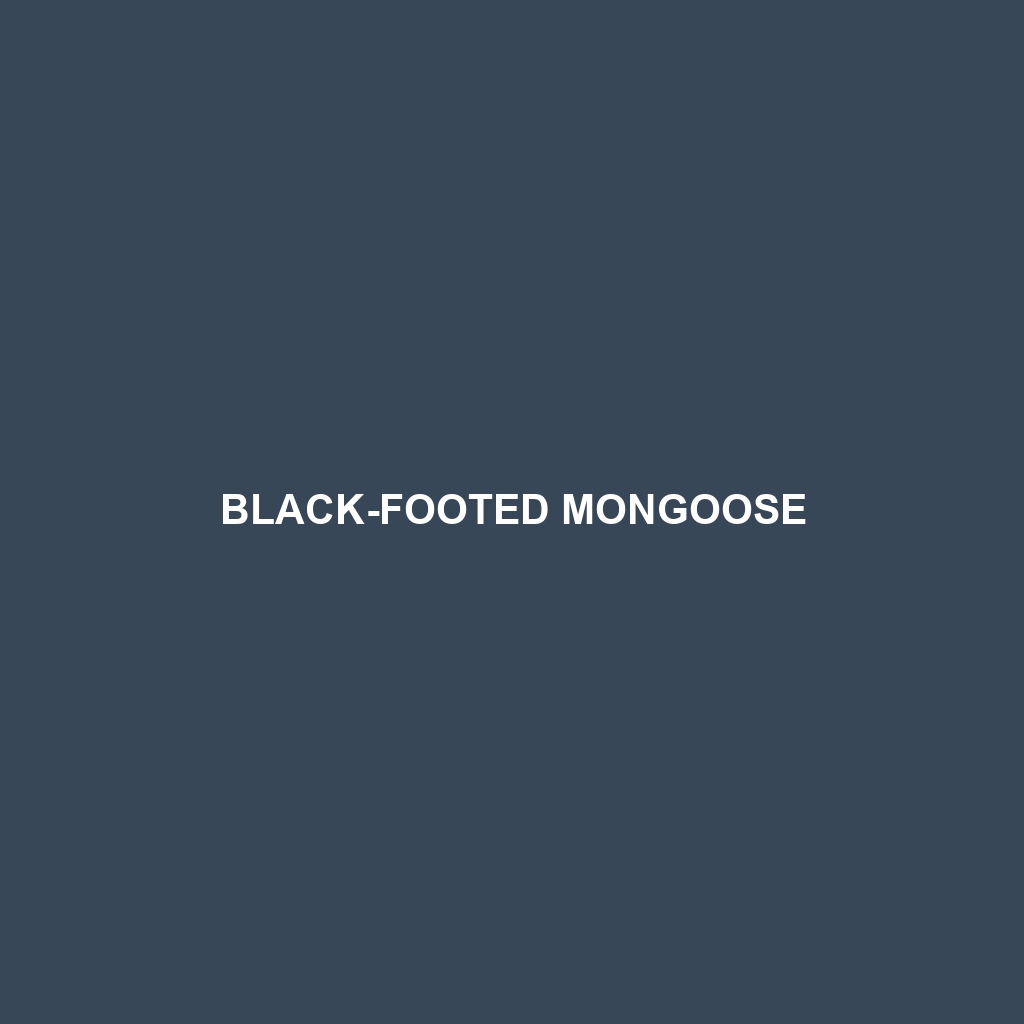Common Name: Jackson’s Mongoose
Scientific Name: Gallida jacksoni
Habitat:
Jackson’s Mongoose is primarily found in the highland forests and grasslands of East Africa, specifically in Kenya and Tanzania. They thrive in well-vegetated areas that provide adequate shelter and access to food resources. Their preferred habitats include both open savannahs and wooded edges, which offer a blend of cover and foraging opportunities.
Physical Characteristics:
Adult Jackson’s Mongooses typically measure between 40 to 60 cm in length, with a tail that adds an additional 20 to 30 cm. They exhibit a slender body covered in short, dense fur that varies from light brown to dark chocolate in color. Their elongated snouts and pointed ears are distinctive features, making them easily identifiable among other mongoose species. Notably, they possess sharp claws and a bushy tail that aids in balance during climbing and foraging.
Behavior:
Jackson’s Mongooses are primarily diurnal, engaging in a range of social behaviors that can include group foraging and grooming. They are known for their playful nature and often engage in play-fighting or chasing each other. Their keen sense of smell is vital for locating food and communicating with other mongooses. Additionally, they are territorial creatures, frequently marking their territories with scent markings.
Diet:
Jackson’s Mongooses are omnivorous, with a diet that primarily consists of insects, small vertebrates, and fruits. They are skilled hunters, often preying on rodents, birds, and even small reptiles. Foraging behavior typically involves digging in the soil or searching under leaf litter, allowing them to find a variety of food sources essential for their sustenance.
Reproduction:
Breeding occurs year-round, with peak seasons depending on environmental conditions. Female Jackson’s Mongooses usually give birth to a litter of 2 to 4 offspring after a gestation period of about 60 to 70 days. The young are born blind and rely heavily on their mothers for care in the initial weeks of life. Parental care is a shared responsibility, with both parents often participating in the upbringing of the young.
Conservation Status:
The current conservation status of Jackson’s Mongoose is classified as Least Concern by the IUCN. However, habitat loss due to agricultural expansion and human encroachment poses potential threats to their populations. Conservation efforts aim to protect their natural habitats and mitigate human-wildlife conflicts.
Interesting Facts:
Jackson’s Mongooses have a unique vocalization system that includes a series of squeaks and growls. These sounds facilitate communication within the group, especially when alerting others to potential dangers. Additionally, they possess a remarkable ability to adapt to various ecological niches, ensuring their survival in changing environments.
Role in Ecosystem:
Jackson’s Mongooses play a significant role in their ecosystem as both predators and prey. They help control insect and rodent populations, contributing to the ecological balance. As part of the food web, they serve as a source of nourishment for larger predators, illustrating their importance within the ecosystem.
This content is structured to provide a comprehensive overview of Jackson’s Mongoose, incorporating relevant information while optimizing for search engines.
